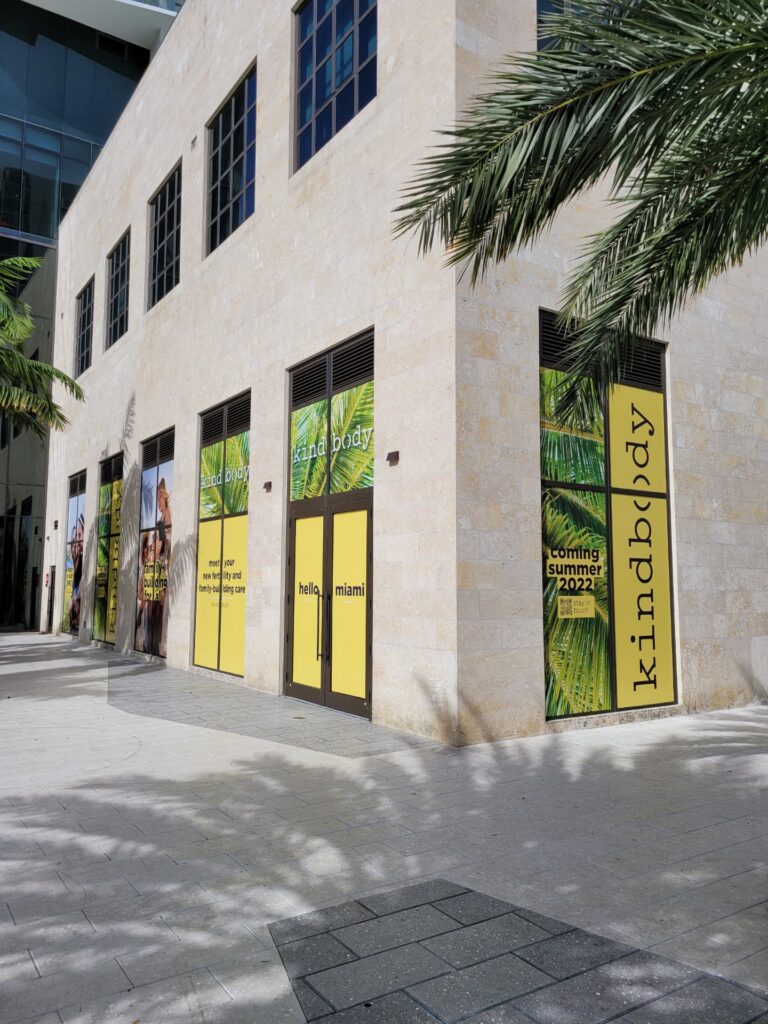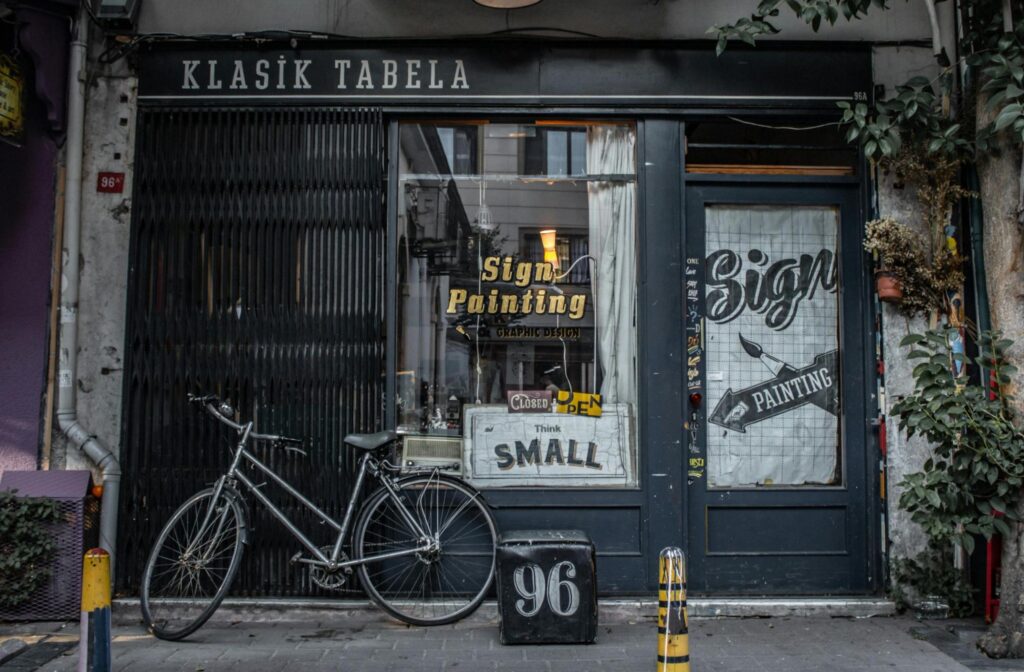Window tinting for retail stores is an effective way to strike a balance between style and functionality. In this article, we will explore the importance of window tinting in retail, the different types of tints available, factors to consider when choosing retail store window tint, the installation process, and the impact of window tinting on retail sales.
Understanding the Importance of Window Tinting in Retail
In the competitive retail industry, creating an inviting and visually appealing storefront is crucial for attracting customers. Window tinting plays a significant role in enhancing both the aesthetic appeal and functionality of a retail store.
When it comes to window tinting, the benefits extend beyond just the surface level. By investing in high-quality window tint films, retailers can also improve the energy efficiency of their stores. Tinted windows help regulate the internal temperature by reducing heat gain during hot weather and heat loss during colder months. This not only creates a more comfortable shopping environment for customers but also leads to cost savings on heating and cooling expenses for the store.
Enhancing Aesthetic Appeal with Window Tint
Window tint films come in various shades and designs, allowing retailers to customize their storefront appearance. Whether it’s a sleek and sophisticated look or a vibrant and eye-catching design, window tinting can transform the overall presentation of a retail store, making it stand out from the crowd.
Moreover, window tinting can also be used as a branding tool for retail businesses. Customized tints with logos, slogans, or promotional messages can reinforce brand identity and attract attention from passersby. This creative use of window tinting not only enhances the aesthetic appeal of the storefront but also serves as a marketing strategy to increase brand visibility.
Functional Benefits of Window Tinting
Aside from aesthetics, window tinting offers several functional benefits for retail establishments. First, tinted windows provide privacy and security by reducing visibility from the outside. This helps protect valuable merchandise and discourages potential burglaries.
Secondly, window tints act as a barrier against harmful UV rays, which can fade merchandise and damage store interiors. By blocking a significant amount of UV radiation, tints help preserve the quality and longevity of products, while also protecting employees and customers from prolonged sun exposure.
Different Types of Window Tints for Retail Stores
When considering window tinting for retail stores, it’s essential to be aware of the different types available and their specific benefits.
Window tints not only provide aesthetic appeal but also offer practical advantages for retail establishments. Understanding the various options can help businesses make informed decisions to enhance their storefronts.
Reflective Tints for Heat Reduction
Reflective tints, also known as solar control films, are designed to minimize heat gain and glare. By reflecting a portion of the sun’s energy, these tints help regulate the indoor temperature, reducing the reliance on air conditioning systems and saving energy costs. Additionally, they enhance customer comfort by reducing glare on products and displays.
Moreover, reflective tints can contribute to a more sustainable environment by reducing the carbon footprint of retail stores. By decreasing the need for excessive air conditioning, these tints play a role in conserving energy and promoting eco-friendly practices.
Decorative Tints for Visual Appeal
Decorative window tints offer endless design options to add a touch of creativity to storefronts. These tints can be customized with logos, patterns, or images, aligning the storefront with the brand’s identity and creating a memorable impression on customers. The combination of privacy and visual appeal makes decorative tints a popular choice among retailers.
Furthermore, decorative tints can serve as a marketing tool for retail stores, effectively communicating the brand’s message to passersby. The unique designs and branding elements on the tinted windows can attract potential customers and differentiate the store from competitors, ultimately driving foot traffic and increasing sales.
Factors to Consider When Choosing Retail Store Window Tint
Several factors should be considered before selecting window tinting for a retail store to ensure the best possible results.
When evaluating window tint options for a retail store, it’s essential to delve deeper into the specific needs and goals of the business. Understanding the primary purpose of the tint, whether it’s to reduce glare, enhance security, or improve energy efficiency, can help in making a more informed decision.
Climate and Sun Exposure
The climate and geographic location of the retail store play a crucial role in choosing the right window tint. Areas with intense sunlight might require tints with higher heat rejection properties, while regions with milder climates can opt for tints that prioritize visual appeal.
Moreover, considering the seasonal variations in sun exposure can also impact the choice of window tint. Tints that offer UV protection can help prevent the fading of merchandise and furniture, ensuring a longer lifespan for store assets.
Store Design and Branding
The design and branding of the retail store should harmonize with the chosen window tint. Whether it’s a modern or traditional aesthetic, the tint should complement the overall theme and enhance the desired ambiance of the store.
Furthermore, the level of privacy required in different areas of the store can influence the tint selection. Frosted or decorative tints can be used strategically to maintain visibility into the store while providing privacy for changing rooms or office spaces.
The Installation Process of Window Tints
Professional installation is paramount to ensure the durability and effectiveness of window tints. Skilled technicians meticulously apply the tint film to ensure a seamless finish that not only enhances the aesthetic appeal of the vehicle but also provides practical benefits such as UV protection and heat reduction.
During the installation process, precision is key. Technicians carefully measure and cut the tint film to fit the specific dimensions of each window, ensuring a perfect fit that eliminates gaps or bubbles that can compromise the tint’s functionality.
Preparing for Tint Installation
Before beginning installation, retailers should clear the window areas from any obstructions. This includes removing curtains, blinds, or decals. The window surfaces should be thoroughly cleaned and dried to achieve a flawless tint application. Any residue or dirt left on the windows can affect the adhesion of the tint film, leading to imperfections in the final result.
Furthermore, proper ventilation in the installation area is essential to facilitate the curing process of the tint film adhesive. Adequate airflow helps the tint adhere securely to the glass, ensuring long-lasting performance without the risk of peeling or bubbling over time.
Maintenance and Care for Long-lasting Tints
Proper maintenance is crucial for prolonging the lifespan of window tints. Regular cleaning with non-abrasive materials and avoiding harsh chemicals are essential. It is recommended to use a mild soap solution and a soft cloth to gently clean the tinted windows, preserving their clarity and appearance.
In addition, avoiding abrasive cleaning tools such as rough sponges or brushes is imperative to prevent scratching the tint film. Any signs of damage, such as scratches or peeling, should be promptly addressed to prevent further deterioration and maintain the effectiveness of the tint in providing privacy and protection from UV rays.
The Impact of Window Tinting on Retail Sales
Window tinting contributes significantly to the success of retail sales by creating a favorable shopping environment and improving storefront attractiveness.
Creating a Comfortable Shopping Environment
Window tints help regulate the indoor temperature by reducing heat and glare. This creates a more comfortable shopping experience for customers, encouraging them to spend more time exploring the store and making purchases. Additionally, the privacy provided by tints can create a sense of exclusivity, enhancing the overall shopping ambiance.
Moreover, window tinting can also help protect merchandise from harmful UV rays, reducing the risk of fading or damage to products on display. By maintaining a consistent temperature and protecting items from sun exposure, retailers can ensure the longevity and quality of their inventory, ultimately leading to increased customer satisfaction and repeat business.
Enhancing Storefront Attractiveness with Tints
The visual appeal of a retail store plays a crucial role in attracting customers. Window tints with customized designs add an element of creativity and uniqueness to the storefront, capturing the attention of passersby and drawing them into the store. A visually appealing storefront increases foot traffic and ultimately contributes to higher sales.
Furthermore, window tinting can also serve as a branding opportunity for retailers. By incorporating logos, slogans, or brand colors into the tinted design, businesses can reinforce brand recognition and create a cohesive visual identity both inside and outside the store. This seamless branding strategy not only enhances the overall aesthetic appeal of the storefront but also helps establish a strong brand presence in the minds of consumers, leading to increased brand loyalty and trust.
Conclusion
In conclusion, window tinting is a valuable investment for retail stores, offering a perfect balance between style and functionality. By enhancing the aesthetic appeal, providing privacy and security, protecting merchandise from sun damage, and improving the shopping environment, retail store window tints have a significant impact on sales and customer experience. When choosing window tints, retailers should consider the climate, sun exposure, store design, and branding to ensure the best possible outcome. Professional installation and proper maintenance are crucial for long-lasting tints that continue to deliver their intended benefits. With the right window tint, retailers can achieve the perfect blend of style and functionality, setting themselves apart in the competitive retail industry.


